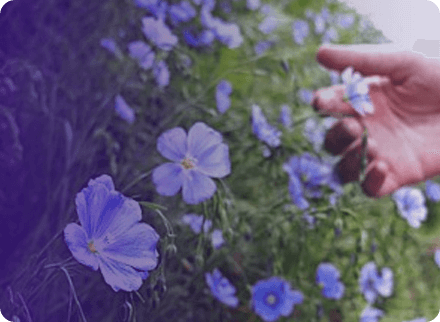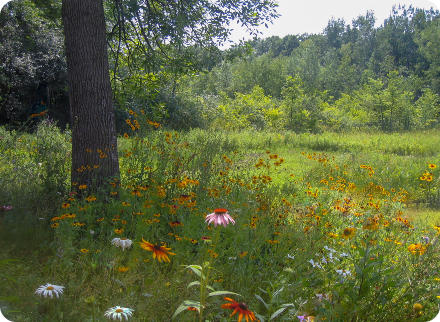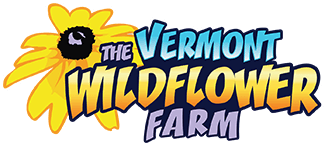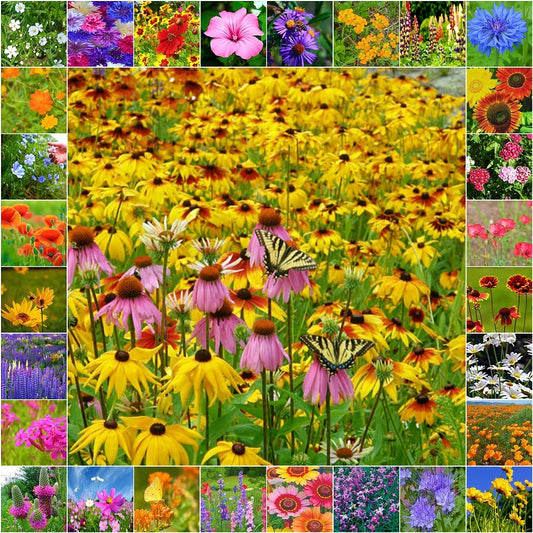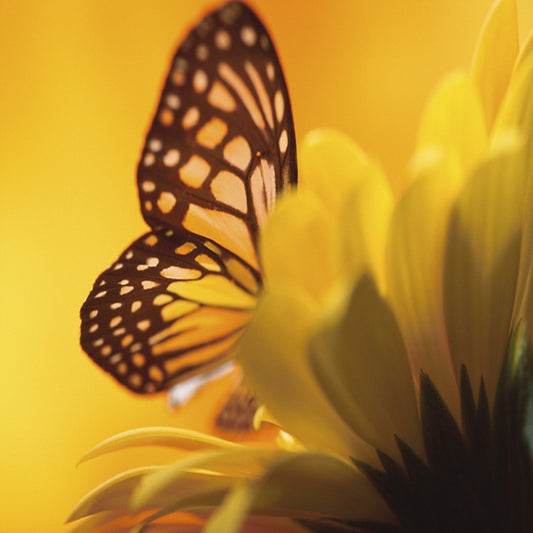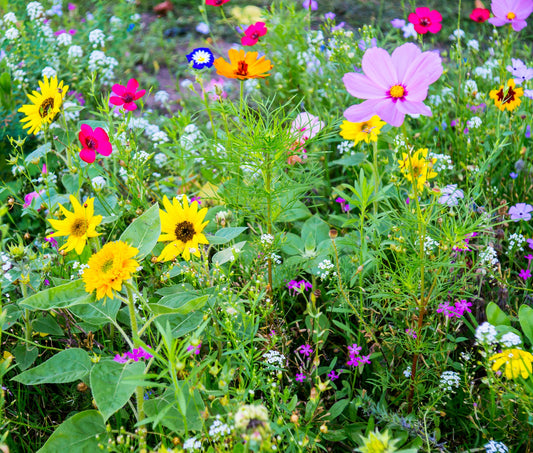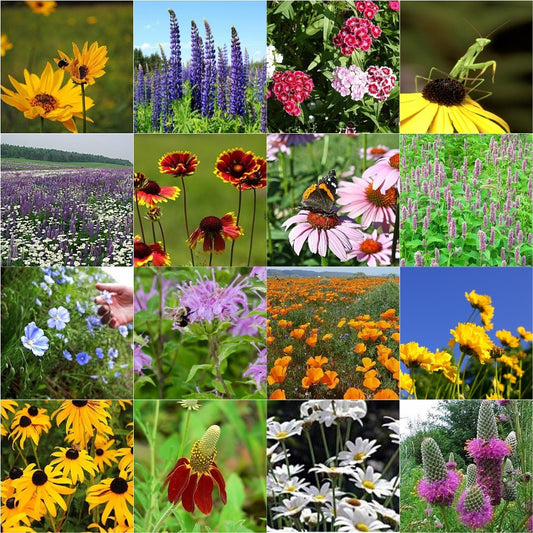Collection: Flowers to Help Bees Help Your Garden by Theresa
Honey bees are not the only bees in trouble. Our native bees are also in decline. The use of pesticides known to be deadly to bees has been linked to the dangerous decline in pollinator populations. If anything could bring the world to its knees it's the disappearance of all the bees. Man could not survive very well if at all without bees, one of the most important players in the ecosystem chain. The sad part is that the cause and the consequences are known. And yet the people in charge" and responsible are so ruled by the dollar they do nothing to stop this disaster in the making. But that's another story. The Good News The good news is you can help the bees. Almost quite literally you can help your" bees. I term it that way because bees only range about 2 miles from their nest. So the ones you see in your garden live in your area, if not in your yard! Your Help Accomplishes More Than One Thing At the same time you'll help the other beneficial insects that attack the bad bugs in your garden since they all need nectar and pollen. Nectar is a bees main source of energy. Pollen provides the proteins and fats they need. Beneficial predator insects need nectar and pollen when the pests they feed on are not available. Flowers that Produce More Pollen and Nectar 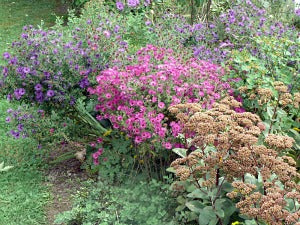 When planning what flowers you want to beautify your garden and help the bees and beneficials, choose those that produce the most pollen and nectar. Hybridized plants won't always accomplished the mission. In many cases, hybridization has reduced the flower's production of pollen and nectar. Native Plants or Plants Derived from Natives
When planning what flowers you want to beautify your garden and help the bees and beneficials, choose those that produce the most pollen and nectar. Hybridized plants won't always accomplished the mission. In many cases, hybridization has reduced the flower's production of pollen and nectar. Native Plants or Plants Derived from Natives  Native plants and plants derived from natives attract more native bees. Plants like Black-eyed Susan (Rudbeckia), Goldenrod (Solidago), Purple Coneflowers (Echinacea), Sunflower (Helianthus) and Asters are great ones to start out. Flat headed flowers like yarrow, queen anne's lace, tansy, dill and parsley are especially good. Different Strokes for Different Folks (sorry I meant Different Strokes for Different Bees - )
Native plants and plants derived from natives attract more native bees. Plants like Black-eyed Susan (Rudbeckia), Goldenrod (Solidago), Purple Coneflowers (Echinacea), Sunflower (Helianthus) and Asters are great ones to start out. Flat headed flowers like yarrow, queen anne's lace, tansy, dill and parsley are especially good. Different Strokes for Different Folks (sorry I meant Different Strokes for Different Bees - ) 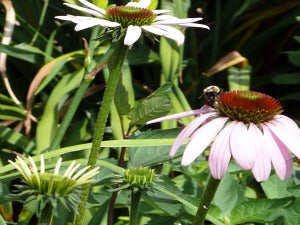 There are thousands of species of bees in our country. They're all a bit different and feed on different shaped flowers. So when choosing your plants provide a range of flower shapes so more bees can benefit. They Need to Eat All Season Choose a selection of plants that will offer bloom (thus, pollen and nectar) through the entire growing season (spring, summer and fall). Try planting at least 3 of each. The clumps, of course, will attract more pollinators than an individual plant. Give the Good Guys a Chance Don't use pesticides. Even some of the ones listed for organic gardeners can kill beneficials as well as the bad guys. Give the good guys a chance to live to get the job done. Diversify Even with Color )
There are thousands of species of bees in our country. They're all a bit different and feed on different shaped flowers. So when choosing your plants provide a range of flower shapes so more bees can benefit. They Need to Eat All Season Choose a selection of plants that will offer bloom (thus, pollen and nectar) through the entire growing season (spring, summer and fall). Try planting at least 3 of each. The clumps, of course, will attract more pollinators than an individual plant. Give the Good Guys a Chance Don't use pesticides. Even some of the ones listed for organic gardeners can kill beneficials as well as the bad guys. Give the good guys a chance to live to get the job done. Diversify Even with Color )  The colors blue, purple, violet, white, and yellow are said to be particularly attractive to bees. If You Want a Better Harvest And take note when you help the bees and other beneficials, you help yourself as well. Studies have shown that plants even self pollinating plants produce more fruit after being visited by the bees. Help the Bees and Help Your Garden When you're planning your vegetable garden plan flowers as well. Make your garden (and your yard for that matter) a haven for our native bees and beneficial insects. Not only will your property and garden be more beautiful, but your small friends will repay you a thousand fold for providing them with food, water and shelter. _________ To get you started here's a short list of some plants that Beneficial Insects and Pollinators find especially attractive. Herbs basil borage comfrey caraway coriander dill fennel feverfew garlic chives golden marguerite (Anthemis Tenctoria) (this is one of the best) also known as yellow camomile English lavender (Lavandula Angustifolia) parsley tansy thyme Cover Crops Alfalfa crimson clover buckwheat Hairy vetch Wild Natives butterfly weed (Asclepias Tuberosa) Queen Anne's Lace dandelions clover Annuals corn poppy california poppy cosmos marigold zinnia Perennials New England Asters catmint (Nepeta) Coreopsis coneflowers (Echinacea) candytuft goldenrod (Solidago) Rudbeckia sedums sunflowers (Helianthus) prairie sunflower (Helianthus Maximiliani) yarrow (Achillea millefolium) yarrow (Achillea Fillipendulina) ___________ All content including pictures is copyrighted by TendingMyGarden.com. All rights are reserved. About the Author Theresa has been organic gardening in Virginia for more than 33 years. She knows how to get great rewards without a lot of hassle. Over the years she's learned what is really needed and what is hype in gardening. She shares that knowledge with you in easy-to-read posts on her website! Visit Theresa's Website today for more great stuff: TendingMyGarden.com Products that are Pollinator Friendly Below!
The colors blue, purple, violet, white, and yellow are said to be particularly attractive to bees. If You Want a Better Harvest And take note when you help the bees and other beneficials, you help yourself as well. Studies have shown that plants even self pollinating plants produce more fruit after being visited by the bees. Help the Bees and Help Your Garden When you're planning your vegetable garden plan flowers as well. Make your garden (and your yard for that matter) a haven for our native bees and beneficial insects. Not only will your property and garden be more beautiful, but your small friends will repay you a thousand fold for providing them with food, water and shelter. _________ To get you started here's a short list of some plants that Beneficial Insects and Pollinators find especially attractive. Herbs basil borage comfrey caraway coriander dill fennel feverfew garlic chives golden marguerite (Anthemis Tenctoria) (this is one of the best) also known as yellow camomile English lavender (Lavandula Angustifolia) parsley tansy thyme Cover Crops Alfalfa crimson clover buckwheat Hairy vetch Wild Natives butterfly weed (Asclepias Tuberosa) Queen Anne's Lace dandelions clover Annuals corn poppy california poppy cosmos marigold zinnia Perennials New England Asters catmint (Nepeta) Coreopsis coneflowers (Echinacea) candytuft goldenrod (Solidago) Rudbeckia sedums sunflowers (Helianthus) prairie sunflower (Helianthus Maximiliani) yarrow (Achillea millefolium) yarrow (Achillea Fillipendulina) ___________ All content including pictures is copyrighted by TendingMyGarden.com. All rights are reserved. About the Author Theresa has been organic gardening in Virginia for more than 33 years. She knows how to get great rewards without a lot of hassle. Over the years she's learned what is really needed and what is hype in gardening. She shares that knowledge with you in easy-to-read posts on her website! Visit Theresa's Website today for more great stuff: TendingMyGarden.com Products that are Pollinator Friendly Below!
 When planning what flowers you want to beautify your garden and help the bees and beneficials, choose those that produce the most pollen and nectar. Hybridized plants won't always accomplished the mission. In many cases, hybridization has reduced the flower's production of pollen and nectar. Native Plants or Plants Derived from Natives
When planning what flowers you want to beautify your garden and help the bees and beneficials, choose those that produce the most pollen and nectar. Hybridized plants won't always accomplished the mission. In many cases, hybridization has reduced the flower's production of pollen and nectar. Native Plants or Plants Derived from Natives  Native plants and plants derived from natives attract more native bees. Plants like Black-eyed Susan (Rudbeckia), Goldenrod (Solidago), Purple Coneflowers (Echinacea), Sunflower (Helianthus) and Asters are great ones to start out. Flat headed flowers like yarrow, queen anne's lace, tansy, dill and parsley are especially good. Different Strokes for Different Folks (sorry I meant Different Strokes for Different Bees - )
Native plants and plants derived from natives attract more native bees. Plants like Black-eyed Susan (Rudbeckia), Goldenrod (Solidago), Purple Coneflowers (Echinacea), Sunflower (Helianthus) and Asters are great ones to start out. Flat headed flowers like yarrow, queen anne's lace, tansy, dill and parsley are especially good. Different Strokes for Different Folks (sorry I meant Different Strokes for Different Bees - )  There are thousands of species of bees in our country. They're all a bit different and feed on different shaped flowers. So when choosing your plants provide a range of flower shapes so more bees can benefit. They Need to Eat All Season Choose a selection of plants that will offer bloom (thus, pollen and nectar) through the entire growing season (spring, summer and fall). Try planting at least 3 of each. The clumps, of course, will attract more pollinators than an individual plant. Give the Good Guys a Chance Don't use pesticides. Even some of the ones listed for organic gardeners can kill beneficials as well as the bad guys. Give the good guys a chance to live to get the job done. Diversify Even with Color )
There are thousands of species of bees in our country. They're all a bit different and feed on different shaped flowers. So when choosing your plants provide a range of flower shapes so more bees can benefit. They Need to Eat All Season Choose a selection of plants that will offer bloom (thus, pollen and nectar) through the entire growing season (spring, summer and fall). Try planting at least 3 of each. The clumps, of course, will attract more pollinators than an individual plant. Give the Good Guys a Chance Don't use pesticides. Even some of the ones listed for organic gardeners can kill beneficials as well as the bad guys. Give the good guys a chance to live to get the job done. Diversify Even with Color )  The colors blue, purple, violet, white, and yellow are said to be particularly attractive to bees. If You Want a Better Harvest And take note when you help the bees and other beneficials, you help yourself as well. Studies have shown that plants even self pollinating plants produce more fruit after being visited by the bees. Help the Bees and Help Your Garden When you're planning your vegetable garden plan flowers as well. Make your garden (and your yard for that matter) a haven for our native bees and beneficial insects. Not only will your property and garden be more beautiful, but your small friends will repay you a thousand fold for providing them with food, water and shelter. _________ To get you started here's a short list of some plants that Beneficial Insects and Pollinators find especially attractive. Herbs basil borage comfrey caraway coriander dill fennel feverfew garlic chives golden marguerite (Anthemis Tenctoria) (this is one of the best) also known as yellow camomile English lavender (Lavandula Angustifolia) parsley tansy thyme Cover Crops Alfalfa crimson clover buckwheat Hairy vetch Wild Natives butterfly weed (Asclepias Tuberosa) Queen Anne's Lace dandelions clover Annuals corn poppy california poppy cosmos marigold zinnia Perennials New England Asters catmint (Nepeta) Coreopsis coneflowers (Echinacea) candytuft goldenrod (Solidago) Rudbeckia sedums sunflowers (Helianthus) prairie sunflower (Helianthus Maximiliani) yarrow (Achillea millefolium) yarrow (Achillea Fillipendulina) ___________ All content including pictures is copyrighted by TendingMyGarden.com. All rights are reserved. About the Author Theresa has been organic gardening in Virginia for more than 33 years. She knows how to get great rewards without a lot of hassle. Over the years she's learned what is really needed and what is hype in gardening. She shares that knowledge with you in easy-to-read posts on her website! Visit Theresa's Website today for more great stuff: TendingMyGarden.com Products that are Pollinator Friendly Below!
The colors blue, purple, violet, white, and yellow are said to be particularly attractive to bees. If You Want a Better Harvest And take note when you help the bees and other beneficials, you help yourself as well. Studies have shown that plants even self pollinating plants produce more fruit after being visited by the bees. Help the Bees and Help Your Garden When you're planning your vegetable garden plan flowers as well. Make your garden (and your yard for that matter) a haven for our native bees and beneficial insects. Not only will your property and garden be more beautiful, but your small friends will repay you a thousand fold for providing them with food, water and shelter. _________ To get you started here's a short list of some plants that Beneficial Insects and Pollinators find especially attractive. Herbs basil borage comfrey caraway coriander dill fennel feverfew garlic chives golden marguerite (Anthemis Tenctoria) (this is one of the best) also known as yellow camomile English lavender (Lavandula Angustifolia) parsley tansy thyme Cover Crops Alfalfa crimson clover buckwheat Hairy vetch Wild Natives butterfly weed (Asclepias Tuberosa) Queen Anne's Lace dandelions clover Annuals corn poppy california poppy cosmos marigold zinnia Perennials New England Asters catmint (Nepeta) Coreopsis coneflowers (Echinacea) candytuft goldenrod (Solidago) Rudbeckia sedums sunflowers (Helianthus) prairie sunflower (Helianthus Maximiliani) yarrow (Achillea millefolium) yarrow (Achillea Fillipendulina) ___________ All content including pictures is copyrighted by TendingMyGarden.com. All rights are reserved. About the Author Theresa has been organic gardening in Virginia for more than 33 years. She knows how to get great rewards without a lot of hassle. Over the years she's learned what is really needed and what is hype in gardening. She shares that knowledge with you in easy-to-read posts on her website! Visit Theresa's Website today for more great stuff: TendingMyGarden.com Products that are Pollinator Friendly Below! -
- Sale
Deluxe Pollinator Wildflower Seed Mix
Annual and perennial wildflowers with a higher percentage of perennials. Great for pollinators! Read MorePrice: As Low As: $14.95Price:Unit price / per -
Hummingbird and Butterfly Wildflower Seed Mix
This is a specifically designed mixture of 17 easy-to-grow wildflowers that butterflies and hummingbirds love. Read MorePrice: As Low As: $10.95Price:Unit price / per -
All Annual Wildflower Seed Mix
Our famous All Annual mixture is the one that makes most customers and clients, literally, "go wild." Read MorePrice: As Low As: $10.95Price:Unit price / per -
All Perennial Wildflower Seed Mix
This is the mix for the serious wildflower gardener who doesn't mind waiting a year for bloom. Read MorePrice: As Low As: $14.95Price:Unit price / per
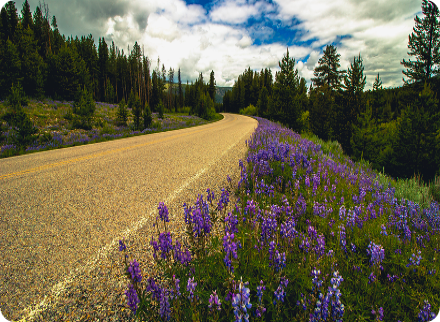
CUSTOM MIXES
We offer CUSTOM Seed Mixes for All Your Projects!
Best Pricing & Advice for Commercial projects
We've got you COVERED for Landscape
Management, Conservation & More!
